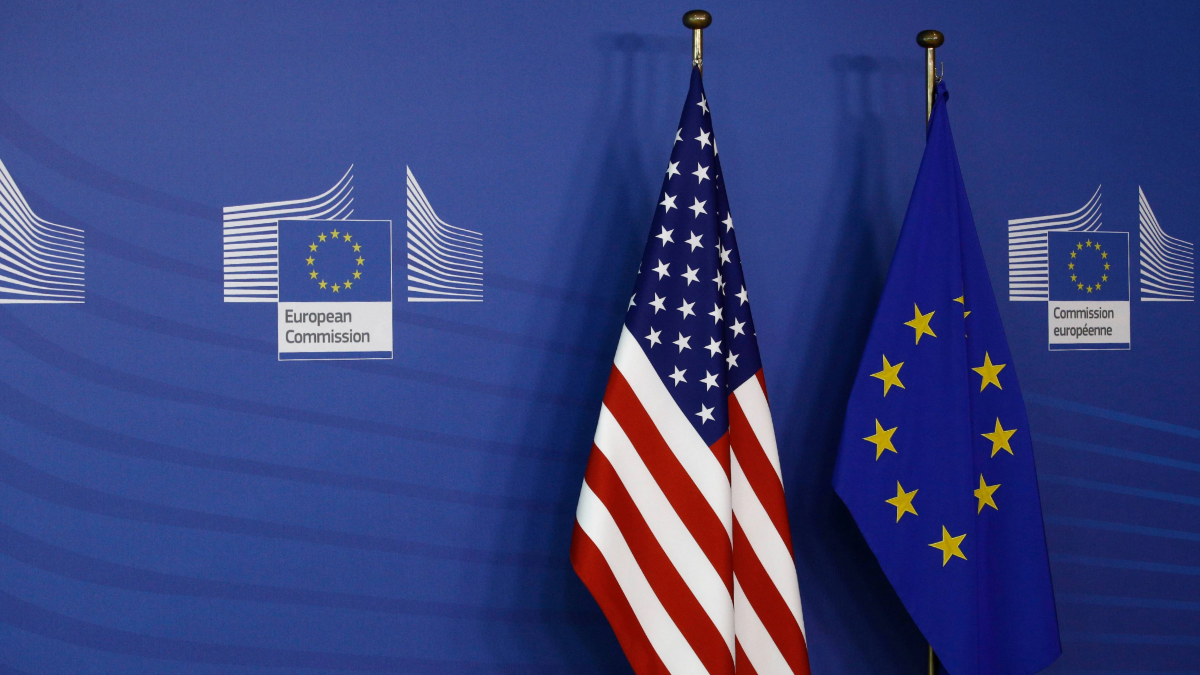The Transatlantic Tech Tussle: Insights from Filip Kulakov
Introduction
Filip Kulakov, a Tech and Public Policy Fellow at Georgetown University’s McCourt School of Public Policy, sheds light on the evolving dynamics between the United States and the European Union (EU) in the context of technology regulation. As transatlantic relations face increasing strains, particularly in tech, understanding the underlying issues is crucial for both policymakers and industry stakeholders.
The Context of Tech Regulation
With US President Donald Trump concluding the first 100 days of his second term, transatlantic relations have become increasingly fraught. The crux of the dispute centers on how digital markets are regulated, especially regarding major US tech companies. The longstanding alliance is now challenged by a perceived divergence in values and regulatory approaches, which could prove costly for American firms operating in Europe.
EU’s Regulatory Shift
In the wake of the US elections and the lead-up to Trump’s inauguration, the EU began to rethink its stance toward American tech giants, particularly through instruments like the Digital Markets Act (DMA) and the Digital Services Act (DSA). These legislative frameworks aim to create equitable competition and ensure online safety, but have drawn fire from US officials who frame them as punitive measures against American innovation.
The Trump administration has often labeled these regulations as akin to “taxation” on US companies, while some view the DSA as a potential infringement on free speech. Such characterizations complicate an already tense dialogue between Washington and Brussels.
Advocacy from American Companies
As these disputes escalate, tech companies based in the US have started to voice their concerns more publicly. They argue passionately against what they describe as "discriminatory" practices by the EU, pushing the US government to challenge these regulations proactively. The resulting exchanges between the two sides have been marked by urgency, with the US advocating for deregulation while the EU staunchly defends its regulatory framework as necessary and fair.
White House Actions and EU Responses
In mid-February, the White House released a memorandum aimed at protecting American tech companies from perceived unfair treatment abroad. As tensions mounted, EU officials issued stark warnings against potential punitive measures by the US, promising to respond “swiftly and decisively.” This backdrop of trade disputes was heightened following the White House’s imposition of tariffs in early April, prompting the EU to clarify the distinction between trade discussions and tech regulation.
Enforcement of EU Regulation
Despite the unresolved tensions, the EU has remained resolute in enforcing its regulations. High-profile actions against American corporations like Apple and Alphabet resulted in significant fines, highlighting a commitment to regulatory compliance that many US officials characterize as “economic extortion.” These legal actions illustrate the widening chasm between US and EU regulatory philosophies.
The Drive for Digital Sovereignty
Even before Trump’s return to office, the EU was already embarking on a mission to strengthen its digital sovereignty. This objective gained momentum in the initial months of his second term, as European leaders emphasized their commitment to creating local digital infrastructures. Initiatives like the EuroStack aim to build sustainable tech ecosystems, ensuring European reliance on US-based technologies is minimized.
The need for solutions that bolster European tech capacity is echoed by a coalition of organizations advocating for a commitment to sovereign digital infrastructure. Increased interest in regional cloud service providers reflects this trend, as businesses across Europe seek alternatives to American tech solutions.
Regulatory Easing in AI
Compounding these ongoing disputes, the EU has also made attempts to address regulatory burdens surrounding artificial intelligence. At an AI summit in Paris, criticisms were leveled at EU regulations for being excessive, which some argue hinders the growth of the AI market. Meanwhile, EU leaders, including Commission President Ursula von der Leyen, acknowledged the necessity of alleviating regulatory hurdles.
In a significant move, the EU’s Commissioner for Technological Sovereignty announced plans to conduct a "fitness check" of existing tech laws, suggesting a willingness to streamline regulations. The withdrawal of the AI Liability Act from consideration opens the door for potential revisions in other tech regulatory frameworks.
Continued Discord over Digital Policy
Despite efforts on both sides to find common ground, deepening disagreements over aspects such as digital market rules and content governance are bound to challenge the transatlantic partnership moving forward. The durability of cooperation is increasingly called into question, as the US continues to push for favorable conditions for its domestic tech sector while the EU fortifies its legal frameworks.
The question remains whether the growing rift in tech policy is a temporary setback or signifies a broader and more lasting realignment in the global tech landscape.
Final Thoughts
The intricate dynamics between the US and EU in the tech sphere reflect broader concerns about market regulation, digital sovereignty, and innovation. As Filip Kulakov shows through his insights, navigating these complexities will require a nuanced understanding of both sides’ priorities and challenges. The impact of these developments will resonate across industries, influencing not only tech giants but also consumers and policymakers in the years to come.


